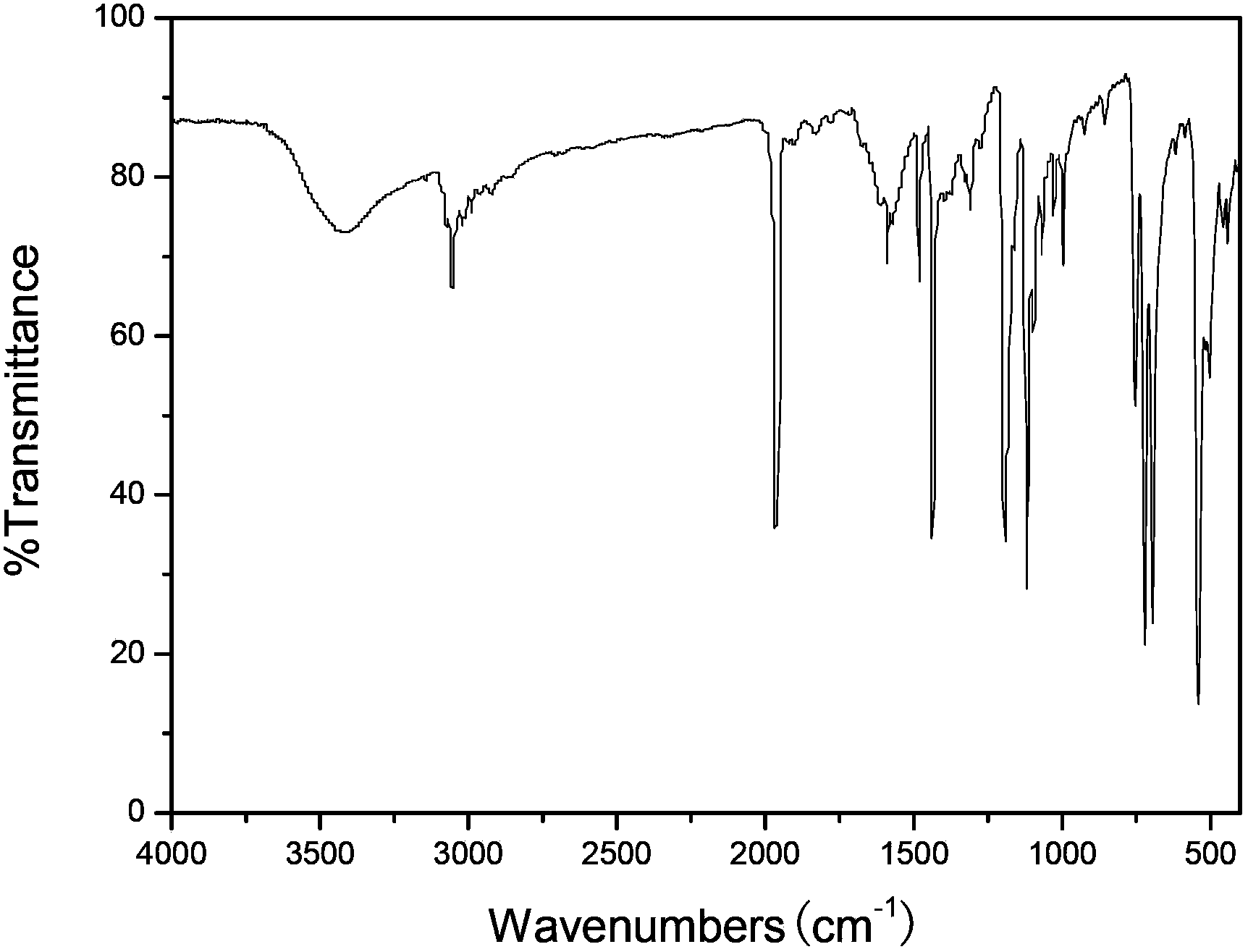Recovery method for rhodium from deactivated catalyst used in formylation of propenyl hydrogen
A propylene hydroformylation catalyst and oxidation treatment technology, applied in the rhodium phosphine complex RhCl2 field, can solve the problems of cumbersome process steps, unfavorable industrial promotion and application, etc., and achieve simple process, reduce high environmental pollution treatment process, The effect of little pollution
- Summary
- Abstract
- Description
- Claims
- Application Information
AI Technical Summary
Problems solved by technology
Method used
Image
Examples
Embodiment 1
[0041] The used catalyst waste liquid is the deactivated catalyst in the process of producing butyraldehyde by the hydroformylation reaction of propylene, carbon monoxide and hydrogen, and its activity is reduced to below 30% of the fresh catalyst. The catalyst waste liquid was concentrated on a scraped thin film evaporation device. The concentration of rhodium in the gained concentrated waste liquid is 4900ppm.
[0042] Under normal pressure, add 8.45 g of the above-mentioned concentrated catalyst waste liquid and 50 ml of absolute ethanol into a 500 ml three-neck flask, stir to fully dissolve them, then add 50 ml of 1mol / L nitric acid ethanol solution, and mix well. Add 2ml of hydrogen peroxide to the flask, slowly heat to 70°C, and react for 5h. Then 50 ml of an ethanol solution containing 1.92 g of NaOH was added. Feed nitrogen into the reaction system, the flow rate of nitrogen is 100ml / min, after staying for 30min, add 50ml ethanol solution containing 2.50g triphenylph...
Embodiment 2
[0044] Under normal pressure, in the 500ml there-necked flask, add the concentrated catalyst waste liquid 9.04g and 50ml dehydrated alcohol with embodiment 1, stir to make it fully dissolve, then add the ethanol solution of 50ml 1mol / L nitric acid, and mix homogeneously. Air is introduced into the mixed solution in the flask, and the air is bubbled through the bottom of the liquid through an immersion tube, so that the oxygen and the catalyst waste liquid can fully contact and react, and the flow rate of the air is 100ml / min. Stir and slowly raise the temperature to 90°C, stop feeding air after 24 hours of reaction. Then 50 ml of ethanol solution containing 1.97 g of NaOH was added and the temperature was lowered to 80°C. Feed nitrogen gas into the reaction system, the flow rate of nitrogen gas is 100ml / min, after staying for 30min, add 50ml ethanol solution containing 2.48g triphenylphosphine, 20ml ethanol solution of 1M hydrochloric acid, 10ml 37% formaldehyde aqueous soluti...
Embodiment 3
[0046] Under normal pressure, in 500ml there-necked flask, add 8.55g of concentrated catalyst waste liquid and 50ml dehydrated ethanol in the same embodiment 1, stir to make it fully dissolve, then add the ethanol solution of 50ml 1mol / L hydrochloric acid, and mix homogeneously. Air is introduced into the mixed solution in the flask, and the air is bubbled through the bottom of the liquid through an immersion tube, so that the oxygen and the catalyst waste liquid can fully contact and react, and the flow rate of the air is 100ml / min. Stir and slowly raise the temperature to 90°C, stop feeding air after 24 hours of reaction. Then 50 ml of ethanol solution containing 2.79 g of KOH was added and the temperature was lowered to 80°C. Feed nitrogen into the reaction system, the flow rate of nitrogen is 150ml / min, after staying for 30min, add 50ml ethanol solution containing 2.48g triphenylphosphine, 20ml ethanol solution of 1M hydrochloric acid, 10ml 37% formaldehyde aqueous solutio...
PUM
 Login to View More
Login to View More Abstract
Description
Claims
Application Information
 Login to View More
Login to View More - R&D
- Intellectual Property
- Life Sciences
- Materials
- Tech Scout
- Unparalleled Data Quality
- Higher Quality Content
- 60% Fewer Hallucinations
Browse by: Latest US Patents, China's latest patents, Technical Efficacy Thesaurus, Application Domain, Technology Topic, Popular Technical Reports.
© 2025 PatSnap. All rights reserved.Legal|Privacy policy|Modern Slavery Act Transparency Statement|Sitemap|About US| Contact US: help@patsnap.com

